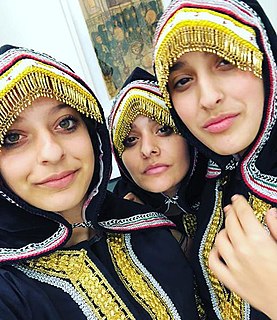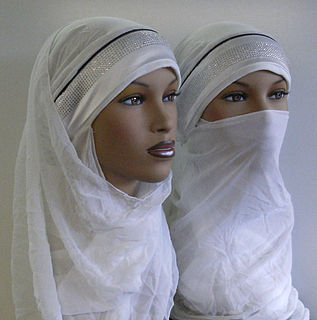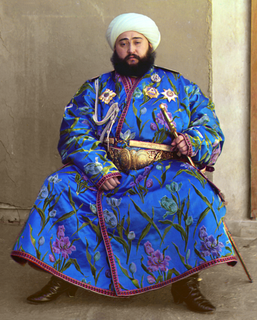 W
WAn agal, also spelled iqal, egal or igal, is an Arab mens' accessory. It is a black cord, worn doubled, used to keep a ghutrah in place on the wearer's head. It is traditionally made of goat hair.
 W
WA banyan is a garment worn by European men and women in the late 17th and 18th century, influenced by the Japanese kimono brought to Europe by the Dutch East India Company in the mid-17th century. "Banyan" is also commonly used in present-day Indian English and other countries in the Indian Subcontinent to mean "vest" or "undershirt".
 W
WThe clothing of the people in Biblical times was made from wool, linen, animal skins, and perhaps silk. Most events in the Old and New Testament take place in ancient Israel, and thus most Biblical clothing is ancient Hebrew clothing. They wore underwear and cloth skirts.
 W
WBiblical sandals, also called Tanakhi sandals and Khugistic sandals, are sandals consisting of a sole with two leather straps that pass across the top of the foot, and one around the heel. The leather is usually brown or black. The term is widely used by manufacturers in Israel.
 W
WA bisht, is known in some Arabic spoken dialects as mishlaḥ or ʿabāʾ, is a traditional men’s cloak popular in the Arab world worn in general for thousands of years.
 W
WGargush is a traditional Yemenite Jewish headdress, resembling a hood, which is thought to have originated in the Sanaite community.
 W
WIsraeli fashion refers to fashion design and modeling in Israel.
 W
WThe jellabiya, also jalabiya or galabeya is a loose-fitting, traditional Egyptian garment from the Nile Valley, also traditionally worn in Sudan, Ethiopia and Eritrea. The colorful Egyptian style is worn by both men and women.
 W
WThe term jilbāb or jilbaab refers to any long and loose-fit coat or outer garment worn by some Muslim women. Wearers believe that this definition of jilbab fulfills the Quranic choice for a hijab. Jilbab, jubbah or jilaabah is also known as chador by Persian speakers in Iran and Afghanistan. The modern jilbāb covers the entire body. Some women will also cover the hands with gloves and the face along with a niqāb. In recent years, a short visor is often included to protect the face from the tropical sun.
 W
WThe keffiyeh or kufiya also known in Arabic as a ghutrah (غُترَة), shemagh, ḥaṭṭah (حَطَّة), and in Persian as a chafiyeh (چفیه), is a traditional Middle Eastern headdress.
 W
WA kippah, also called a koppel or yarmulke, is a brimless cap, usually made of cloth, traditionally worn by Jewish males to fulfill the customary requirement that the head be covered. It is worn by men in Orthodox communities at all times. Among non-Orthodox communities, those who wear them customarily do so only during prayer, while attending a synagogue, or in other rituals. Most synagogues and Jewish funeral parlors keep a ready supply of kippot.
 W
WPalestinian costumes are the traditional clothing worn by Palestinians. Foreign travelers to Palestine in the 19th and early 20th centuries often commented on the rich variety of the costumes worn, particularly by the fellaheen or village women. Many of the handcrafted garments were richly embroidered and the creation and maintenance of these items played a significant role in the lives of the region's women.
 W
WTraditional Persian clothing can be seen in Persian miniature paintings, employ both vivid and muted colors for clothing, although the colors of paint pigment often do not match the colors of dyes.
 W
WThe shendyt ( was a type of loincloth similar to a skirt. It was a kilt-like garment worn in ancient Egypt. It was made of cloth and was worn around the waist, typically extending to above the knees. Shendyts are depicted on pharaohs, deities, and commoners in a variety of situations in Egyptian artwork.
 W
WSirwal, also saroual, seroual, sarouel or serouel (Arabic: سِرْوَال, also known, in some contexts, as Harem pants, are a form of baggy trousers predating the Christian era. They are typically worn in Muslim countries, but also extensively in the Polish Commonwealth, in the Greek countryside, and other places in the Balkans that were influenced by Ottoman Turks prior to World War II. The trousers are not originally an Arab garment but were introduced from Persia to other Mideastern regions. The sirwal is also worn by communities in North India.
 W
WThe tantour (tantoor) was a form of cone-shaped woman's headdress similar to the hennin, popular in the Levant during the nineteenth century, but seldom seen after 1850.
 W
WThe taqiyah or araqchin is a short, rounded skullcap. It is often worn for religious purposes; for example, Muslims believe that the Islamic prophet Muhammad used to keep his head covered, therefore making it mustahabb. Muslim men often wear them during the five daily prayers.
 W
WThawb, also spelled thobe or tobe and known by various other names in different regions, is an ankle-length dress, usually with long sleeves. It is commonly worn in the Arabian Peninsula and the Middle East, Iran, neighbouring Arab countries, and some countries in East and West Africa. An izaar is typically worn underneath.
 W
WTiraz are medieval Islamic embroideries, usually in the form of armbands sewn onto robes of honour (khilat). They were bestowed upon high-ranking officials who showed loyalty to the Caliphate, and given as gifts to distinguished individuals. They were usually inscribed with the ruler's names, and were embroidered with threads of precious metal and decorated with complex patterns. Tiraz were a symbol of power; their production and export were strictly regulated, and were overseen by a government-appointed official.
 W
WA turban is a type of headwear based on cloth winding. Featuring many variations, it is worn as customary headwear by people of various cultures. Communities with prominent turban-wearing traditions can be found in the Indian subcontinent, Southeast Asia, the Arabian Peninsula, the Middle East, the Balkans, the Caucasus, Central Asia, North Africa, West Africa, East Africa, and amongst some Turkic peoples in Russia as well as Ashkenazi Jews.